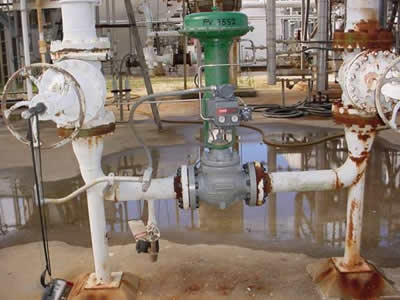
Incident Report Subject: FW: PV incident Date of Email reporting Incident: Thu 31/10/2002 09:43 Report Detail: The document below describes an October 28th 2002 incident that occurred at the Port Arthur Refinery and the lessons learned. No injuries resulted from the incident, but there was a high potential for serious injury to have occurred. Incident # 5109 On 10/28/02, 63PV–3552 was taken out of service for repairs. Both the upstream and downstream block valves were blocked in. The drain valve was in the open position after the block valves were closed. Both valves were locked out but afterwards the drain valve was closed due to fuel gas vapors blowing out. PV-3552 was opened to 50%, but because one or both block valves were leaking by, the pressure on the system remained near 390 psi. The actuator was removed and the bonnet of the valve was unbolted. While in the process of wedging the bonnet up, the entire assembly flew into the air striking the by-pass line above. When this occurred there was a high potential for injury. An employee could have been struck by the assembly when it traveled upward and again when it traveled back down. This assembly weighs approximately 55 lbs.
Lessons Learned:
|

